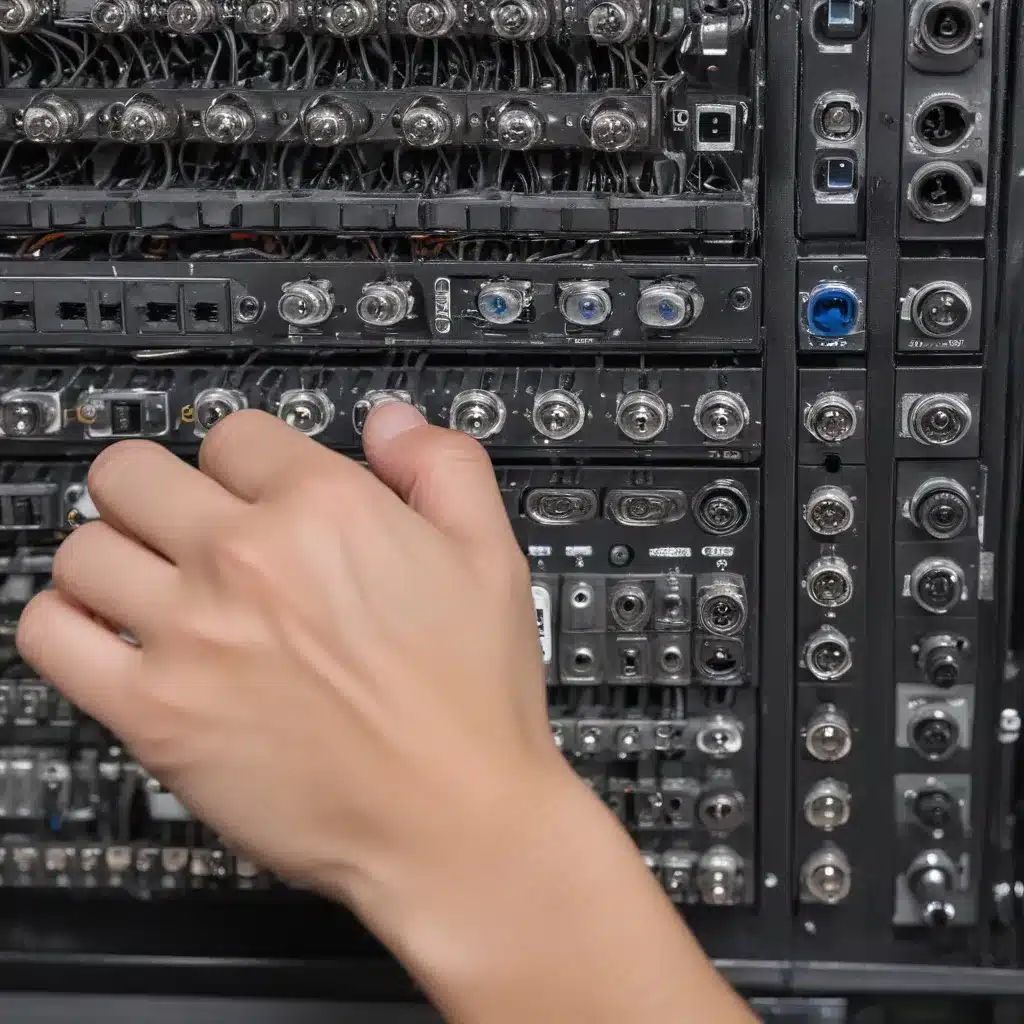Dealing with Dreaded Device Dilemmas
We’ve all been there. You stroll into the office, ready to tackle the day’s to-do list, only to find your trusty work computer stubbornly refusing to spring to life. As your heart sinks and panic sets in, you’re left wondering, “Why won’t my computer turn on?”
Fear not, my fellow tech-savvy professionals! I’m here to guide you through the most common causes of business computers not powering up and share practical solutions to get you back in the game. [1] From pesky power issues to meddlesome malware, we’ll explore the likely culprits and equip you with the know-how to troubleshoot like a pro.
Diagnosing Power Problems
Let’s start with the most obvious – and often the easiest to fix – issue: power problems. [1] If you press the power button and nothing happens, don’t panic just yet. Take a deep breath and try these simple steps:
Check the Obvious
First, ensure that the power cable is securely plugged into both the computer and the wall outlet. [1] It may sound too simple, but you’d be surprised how often a loose connection is the root cause of a non-starting device. If the cable seems fine, try a different outlet to rule out a faulty power source.
Laptops and Batteries
For laptop users, the issue could be related to the battery or the AC adapter. [1] Try removing the battery, if possible, and powering the laptop directly from the adapter. If it turns on, the battery may need to be replaced. Conversely, if the laptop still won’t start, the adapter could be the problem, and you’ll need to find a compatible replacement.
Desktop Power Supply
Desktop PCs, on the other hand, may have a power supply issue. [1] Check the power switch on the back of the unit and ensure it’s in the “on” position. If it is, you can carefully open the case (with the power unplugged, of course) and reseat any loose connections to the motherboard and other components. However, if the power supply itself is faulty, it will need to be replaced by a professional.
Addressing Operating System Woes
Now, let’s delve into the more complex world of operating system-related problems. [1] If your computer is powering on but not booting properly, you may be dealing with a software issue.
Booting into Safe Mode
One of the first things to try is booting your computer into Safe Mode. [2] This specialized startup mode can help you diagnose and resolve issues without the interference of third-party programs or drivers. To access Safe Mode, follow these steps:
- Forcibly shut down the computer by pressing and holding the power button for 10 seconds.
- Turn the computer back on and watch for the first signs of the boot process, such as the manufacturer’s logo.
- As soon as you see the logo, press and hold the power button for another 10 seconds to force a shutdown.
- Repeat steps 1-3 a total of three times.
- On the fourth boot, your computer should enter the Windows Automatic Repair mode, where you can select “Safe Mode with Networking” to start the troubleshooting process.
Checking the BIOS/UEFI
Another potential culprit could be an issue with your computer’s BIOS (Basic Input/Output System) or UEFI (Unified Extensible Firmware Interface). [2] These fundamental systems control how your hardware interacts with the operating system during the boot process.
To access the BIOS or UEFI, you’ll need to press a specific key (often F2, F12, or Del) during the boot sequence. Once inside, you can check that the boot order is set correctly and reset any custom settings that may be causing issues.
Tackling Malware Mayhem
Finally, let’s address the dreaded possibility of malware. [2] Malicious software can wreak havoc on your computer’s performance, sometimes even preventing it from booting up properly.
Booting from a USB Drive
If you suspect malware is the culprit, try booting your computer from a USB drive loaded with your preferred anti-malware software. [2] This will allow you to scan your system and remove any unwanted programs without relying on the potentially compromised internal hard drive.
Resetting Windows
As a last resort, you may need to resort to a full Windows reset. [2] This will wipe your computer’s hard drive and reinstall a fresh, clean copy of the operating system. Be sure to back up any important data beforehand, as this process will erase everything on the drive.
Staying Proactive
Remember, addressing computer issues early and often is the key to minimizing downtime and maximizing productivity. [1] By familiarizing yourself with these common problems and solutions, you’ll be better equipped to tackle any tech troubles that come your way.
And if all else fails, don’t hesitate to reach out to a professional computer repair service. [1] Their expertise and specialized tools can often get your business computers back up and running in no time, allowing you to focus on what really matters – growing your company.
So, the next time your office devices decide to play a frustrating game of “not today,” don’t despair. Embrace your inner tech wizard, and let’s get those computers back in business!
References:
[1] CDW. “Common Computer Problems and Solutions.” CDW, 30 Sept. 2021, www.cdw.com/content/cdw/en/articles/hardware/common-computer-problems-and-solutions.html.
[2] Bohn, Dieter. “Why Won’t My PC Turn On? 10 Fixes to Try.” Business Insider, Business Insider, 19 Mar. 2023, www.businessinsider.com/guides/tech/why-wont-my-pc-turn-on.













